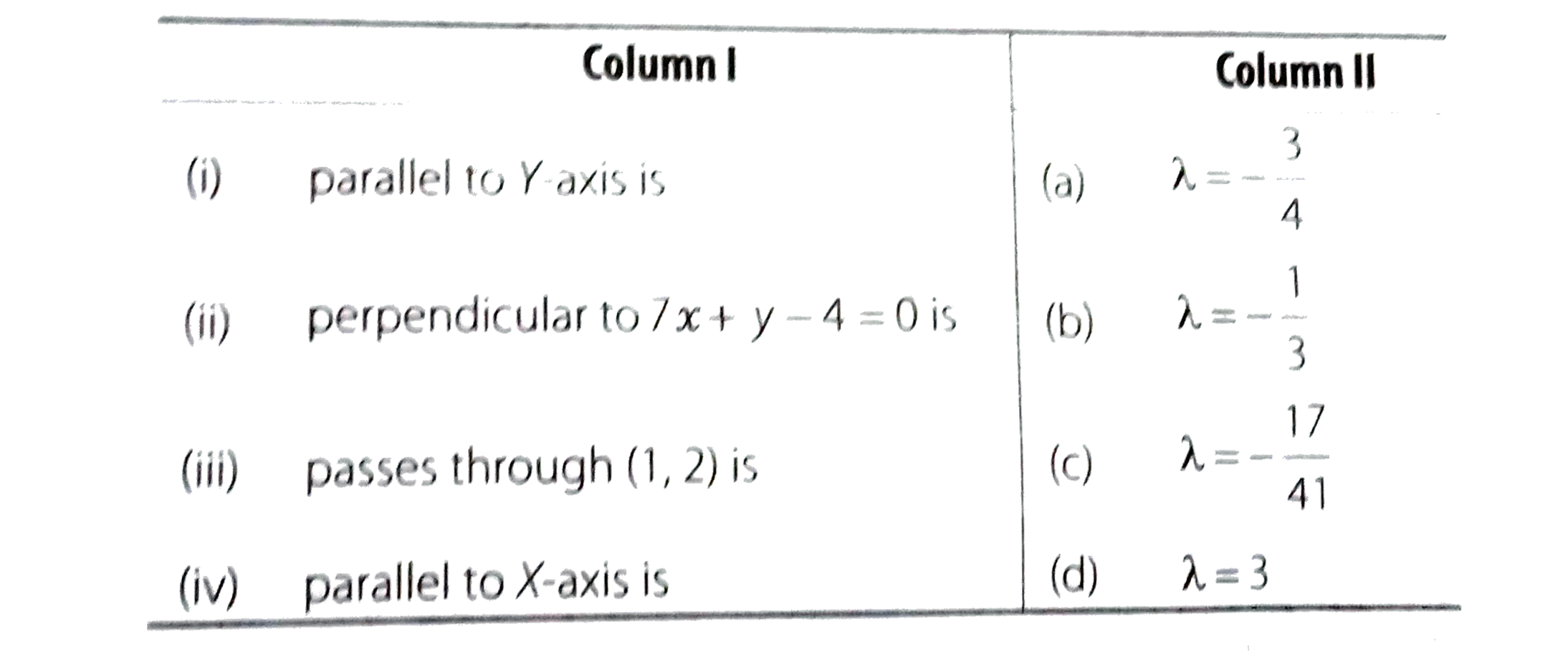A line of slope λ(0<λ<1) touches the parabola y+3x2=0 at P. If S is the focus and M is the foot of the perpendicular of directrix from P , then tan∠MPS equals 2λ (b) 2λ−1+λ2 1−λ21+λ2 (d) none of these
2λ
2λ−1+λ2
1−λ21+λ2
none of these
The correct Answer is:B
(2) 
Slope of line =λ=tanθ
∴ tan(∠MPS)=tan(π2−θ)=tan(π−2θ)
=−tan2θ=2λλ2−1
Topper's Solved these Questions
- BOOK - CENGAGECHAPTER - PARABOLAEXERCISE - Exercise (Multiple)26videos
PARABOLA
- BOOK - CENGAGECHAPTER - PARABOLAEXERCISE - Exercise (Comprehension)41videos
PARABOLA
- BOOK - CENGAGECHAPTER - PARABOLAEXERCISE - Exercise 5.79videos
PARABOLA
- BOOK - CENGAGECHAPTER - PAIR OF STRAIGHT LINESEXERCISE - Exercise (Numerical)5videos
PAIR OF STRAIGHT LINES
- BOOK - CENGAGECHAPTER - PERMUTATION AND COMBINATIONEXERCISE - Question Bank19videos
PERMUTATION AND COMBINATION
Similar Questions
Knowledge Check
- Question 1 - Select One
If the sum of the slopes of the lines given by 4x2+2λxy−7y2=0 is equal to the product of the slope, then λ is equal to
A-4B-2C2D4 - Question 2 - Select One
Consider a set of all the lines (2+λ)x−(3+2λ)y+(1+λ)=0,λ∈R, then equation of the line which belongs to this set & farthest from origin is :
A2x−3y+1=0Bx−2y+1=0Cx−y=0Dx+y=2 - Question 3 - Select One
For balmer series wavelength of first line is λ1 and for brackett series wavelength of first line is λ2 then λ1λ2 is
A0.81B0.162C0.198D0.238
The portion of the line ax+by−1=0, intercepted between the lines ax+y+1=0 and x+by=0 subtends a right angle at the origin and the condition in a and b is λa+b+b2=0, then find value of λ.
View SolutionThe values of λ for which the function f(x)=λx3−2λx2+(λ+1)x+3λ is increasing through out number line (a)λ∈(−3,3) (b) λ∈(−3,0) (c)λ∈(0,3) (d) λ∈(1,3)
View SolutionIf the direction ratios of two lines are (1,λ,2)and(λ,λ+1,λ) and the angle between the lines is 90∘ then
the modulus of sum of all values of λ is ________View SolutionPortion of asymptote of hyperbola x2a2−y2b2=1 (between centre and the tangent at vertex) in the first quadrant is cut by the line y+λ(x−a)=0 (lambda is a parameter) then (A) λ∈R (B) λ∈(0,∞) (C) λ∈(−∞,0) (D) λ∈R−{0}
View SolutionFor balmer series wavelength of first line is λ1 and for brackett series wavelength of first line is λ2 then λ1λ2 is
View Solution


